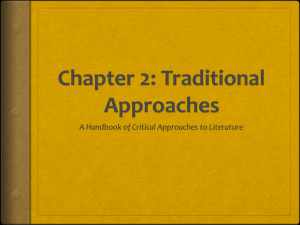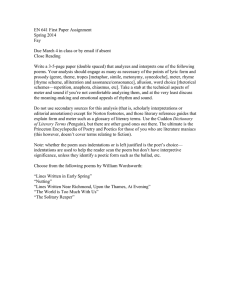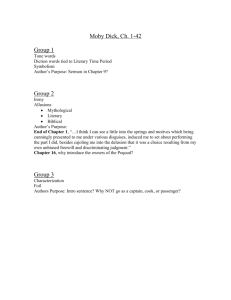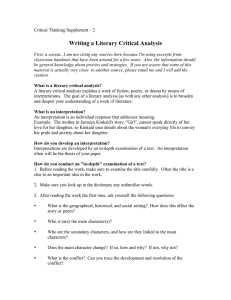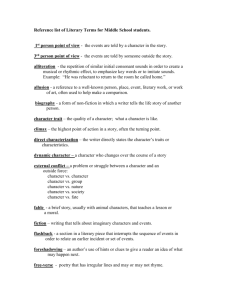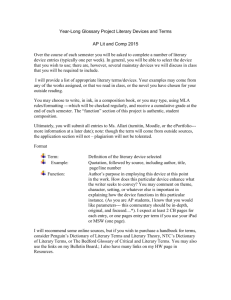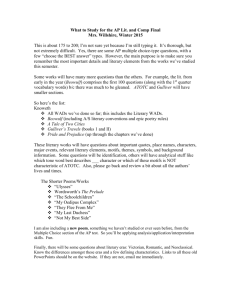Explanation of Analysis Writing
advertisement
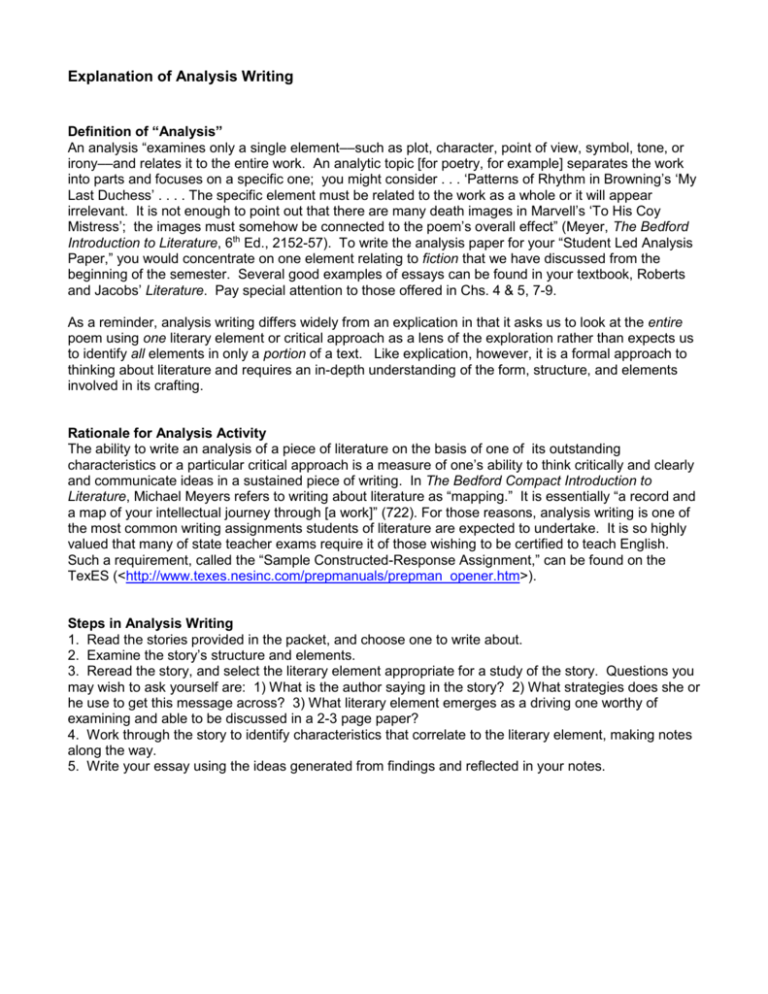
Explanation of Analysis Writing Definition of “Analysis” An analysis “examines only a single element––such as plot, character, point of view, symbol, tone, or irony––and relates it to the entire work. An analytic topic [for poetry, for example] separates the work into parts and focuses on a specific one; you might consider . . . ‘Patterns of Rhythm in Browning’s ‘My Last Duchess’ . . . . The specific element must be related to the work as a whole or it will appear irrelevant. It is not enough to point out that there are many death images in Marvell’s ‘To His Coy Mistress’; the images must somehow be connected to the poem’s overall effect” (Meyer, The Bedford Introduction to Literature, 6th Ed., 2152-57). To write the analysis paper for your “Student Led Analysis Paper,” you would concentrate on one element relating to fiction that we have discussed from the beginning of the semester. Several good examples of essays can be found in your textbook, Roberts and Jacobs’ Literature. Pay special attention to those offered in Chs. 4 & 5, 7-9. As a reminder, analysis writing differs widely from an explication in that it asks us to look at the entire poem using one literary element or critical approach as a lens of the exploration rather than expects us to identify all elements in only a portion of a text. Like explication, however, it is a formal approach to thinking about literature and requires an in-depth understanding of the form, structure, and elements involved in its crafting. Rationale for Analysis Activity The ability to write an analysis of a piece of literature on the basis of one of its outstanding characteristics or a particular critical approach is a measure of one’s ability to think critically and clearly and communicate ideas in a sustained piece of writing. In The Bedford Compact Introduction to Literature, Michael Meyers refers to writing about literature as “mapping.” It is essentially “a record and a map of your intellectual journey through [a work]” (722). For those reasons, analysis writing is one of the most common writing assignments students of literature are expected to undertake. It is so highly valued that many of state teacher exams require it of those wishing to be certified to teach English. Such a requirement, called the “Sample Constructed-Response Assignment,” can be found on the TexES (<http://www.texes.nesinc.com/prepmanuals/prepman_opener.htm>). Steps in Analysis Writing 1. Read the stories provided in the packet, and choose one to write about. 2. Examine the story’s structure and elements. 3. Reread the story, and select the literary element appropriate for a study of the story. Questions you may wish to ask yourself are: 1) What is the author saying in the story? 2) What strategies does she or he use to get this message across? 3) What literary element emerges as a driving one worthy of examining and able to be discussed in a 2-3 page paper? 4. Work through the story to identify characteristics that correlate to the literary element, making notes along the way. 5. Write your essay using the ideas generated from findings and reflected in your notes.

